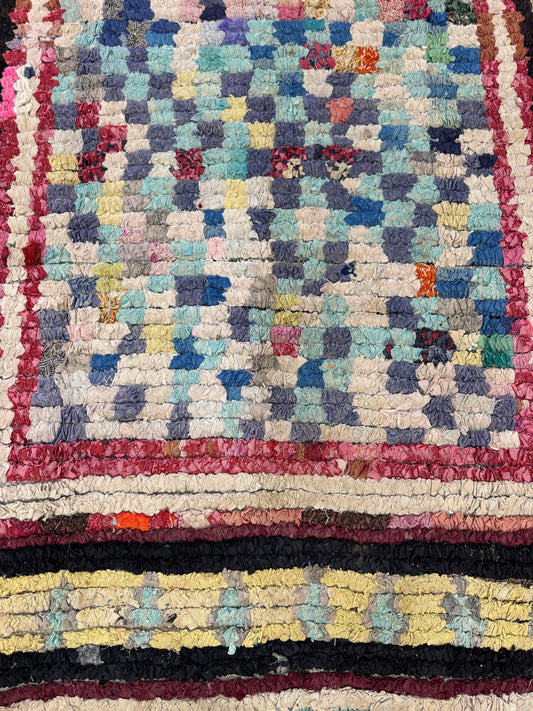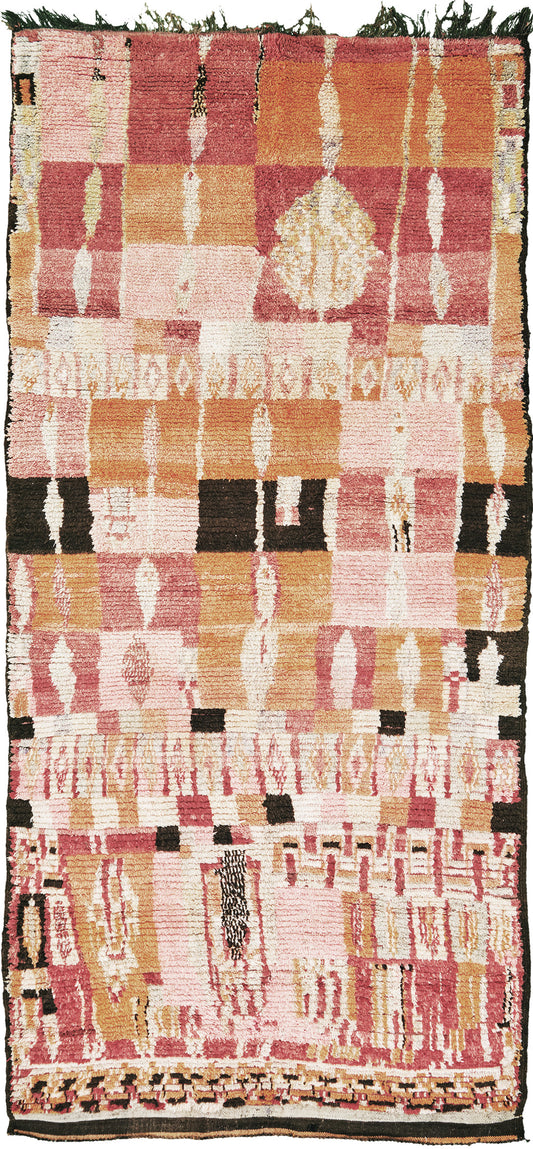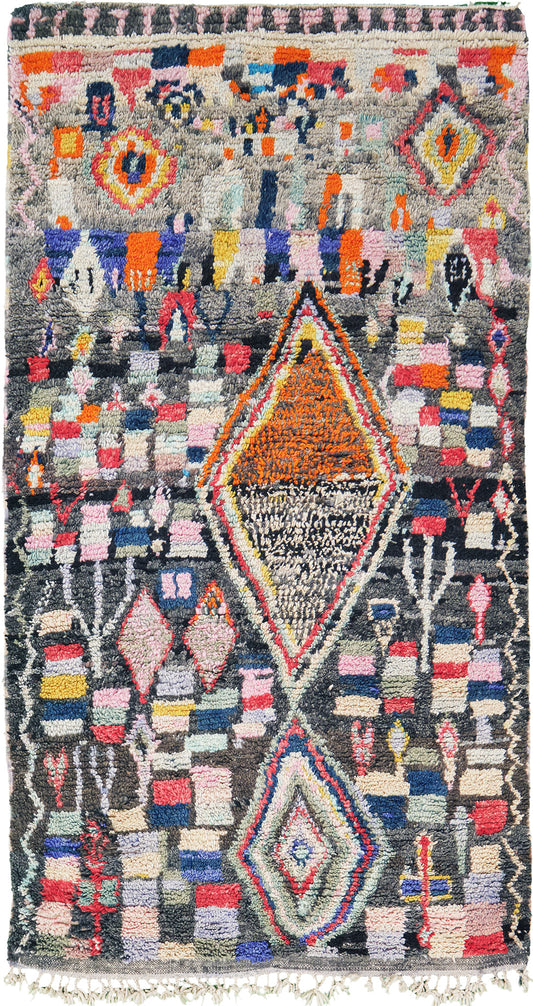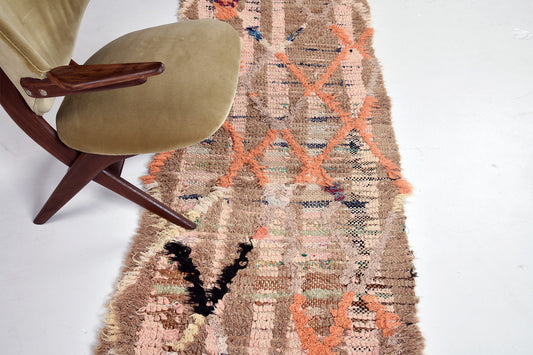-
Moroccan Middle Atlas Tribe Berber Rug
Regular price $1,850.00 USDRegular price Sale price $1,850.00 USDUnit price per -
Vintage Moroccan Azilal
Regular price $4,800.00 USDRegular price Sale price $4,800.00 USDUnit price per -
Vintage Moroccan Azilal
Regular price $1,200.00 USDRegular price Sale price $1,200.00 USDUnit price per -
Vintage Moroccan Azilal
Regular price $1,850.00 USDRegular price Sale price $1,850.00 USDUnit price per -
Vintage Moroccan Azilal
Regular price $2,000.00 USDRegular price Sale price $2,000.00 USDUnit price per -
Vintage Moroccan Azilal
Regular price $1,750.00 USDRegular price Sale price $1,750.00 USDUnit price per -
Vintage Moroccan Azilal
Regular price $2,400.00 USDRegular price Sale price $2,400.00 USDUnit price per -
Vintage Moroccan Azilal
Regular price $1,400.00 USDRegular price Sale price $1,400.00 USDUnit price per -
Vintage Moroccan Azilal
Regular price $6,100.00 USDRegular price Sale price $6,100.00 USDUnit price per -
Vintage Moroccan Azilal
Regular price $2,000.00 USDRegular price Sale price $2,000.00 USDUnit price per -
Vintage Moroccan Azilal
Regular price $4,500.00 USDRegular price Sale price $4,500.00 USDUnit price per -
Vintage Moroccan Azilal
Regular price $8,500.00 USDRegular price Sale price $8,500.00 USDUnit price per -
Vintage Moroccan Azilal
Regular price $9,500.00 USDRegular price Sale price $9,500.00 USDUnit price per -
Vintage Moroccan Azilal
Regular price $4,500.00 USDRegular price Sale price $4,500.00 USDUnit price per -
Vintage Moroccan Azilal
Regular price $1,500.00 USDRegular price Sale price $1,500.00 USDUnit price per -
Vintage Moroccan Azilal
Regular price $1,300.00 USDRegular price Sale price $1,300.00 USDUnit price per -
Vintage Moroccan Azilal
Regular price $2,800.00 USDRegular price Sale price $2,800.00 USDUnit price per -
Vintage Moroccan Azilal Rug
Regular price $5,800.00 USDRegular price Sale price $5,800.00 USDUnit price per -
Vintage Moroccan Azilal Runner
Regular price $2,600.00 USDRegular price Sale price $2,600.00 USDUnit price per
Collapsible content
More About Antique Moroccan Rugs
Antique Moroccan Rugs: A Journey Through Craft, Culture, and History
Moroccan rugs are not just floor coverings; they are a living embodiment of the country's rich history, cultural diversity, and traditional craftsmanship. These rugs, particularly the antique varieties, tell a story of regional artistry and ancestral skill passed down through generations. For those seeking to add a unique and historical element to their interiors, antique Moroccan rugs offer unparalleled beauty, versatility, and meaning. In this guide, we'll delve into the regions of Morocco known for their rug-making traditions, explore the types of Moroccan rugs, understand the traditional weaving methods, and uncover the symbols that have made these rugs coveted treasures. Finally, we'll discuss the various uses of antique Moroccan rugs in modern interiors.
Regions of Morocco with Rug Traditions
Morocco’s rich history of rug-making can be traced back to various regions, each with its distinct style and technique. The diverse geography of Morocco — from the high mountains to the desert plains — has influenced the variety of materials and designs seen in its rugs.
- The Atlas Mountains: Home to the Berber tribes, this region is perhaps the most well-known for producing antique Moroccan rugs. The Beni Ourain tribe, for example, is famous for its rugs with geometric patterns and natural, undyed wool. These high-pile rugs are often crafted to protect against the cold of the mountains and are known for their thick, plush texture.
- Middle Atlas: Rugs from this region, particularly from the Azilal tribe, often feature a mix of wool and cotton, making them lighter and more flexible than their high-pile counterparts. These rugs are known for their bold, colorful patterns, often incorporating red, orange, and yellow hues.
- The Sahara Desert and Southern Morocco: The desert plains are home to the Tuareg and other desert tribes. Rugs from this region, like those of the Boucherouite tradition, often use recycled materials and vibrant colors, reflecting the resourcefulness of the local weavers. These rugs tend to be flatweaves, making them highly durable and practical.
- The Rabat Region: Urban rug-making traditions from cities like Rabat differ from rural Berber styles. The city’s rugs often have a more refined, detailed approach, featuring complex floral and arabesque motifs influenced by classical Islamic art.
Types of Moroccan Rugs and Their Visual and Material Qualities
Antique Moroccan rugs come in a range of styles, each distinct in terms of material, pattern, and weaving technique. Below are some of the most iconic types:
- Beni Ourain Rugs: Recognized for their minimalist, geometric patterns, these rugs are typically made from undyed wool in shades of ivory, cream, and black. Their high-pile construction and simple, abstract designs make them perfect for contemporary interiors while maintaining a rustic, traditional feel.
- Azilal Rugs: Combining natural wool with brightly dyed threads, Azilal rugs are vibrant and energetic. Their visual complexity comes from asymmetrical patterns, often incorporating tribal symbols and vibrant color schemes.
- Boujad Rugs: Known for their dense weave and rich color palettes, Boujad rugs typically feature warm tones like reds, pinks, and purples. Their abstract designs and freeform patterns make each piece one-of-a-kind.
- Boucherouite Rugs: Unlike other wool-based rugs, Boucherouite rugs are made from recycled textiles, including cotton and nylon. These vibrant, patchwork-like rugs have become popular for their sustainable origins and eclectic look.
- Taznakht Rugs: Crafted in southern Morocco, Taznakht rugs are prized for their intricate, colorful designs and flat-weave style. These rugs often feature bright reds, oranges, and yellows, with intricate diamond motifs dominating the design.
Characteristics of Traditional Weaving in Morocco
The process of weaving Moroccan rugs is deeply rooted in tribal customs and social practices. Traditional looms, often made from wood, are used to create these masterpieces, which can take weeks or even months to complete depending on the complexity of the design.
- Hand-Knotting and Weaving Techniques: Moroccan rugs are either hand-knotted or hand-woven, both of which are time-consuming processes requiring skill and patience. The high-pile rugs, like those from the Beni Ourain tribe, involve the labor-intensive process of hand-knotting each strand of wool to create a thick, plush texture. Flatweave rugs, such as the Boucherouite or Taznakht styles, use the more straightforward but equally skillful method of interlocking weft threads to create patterns.
- Materials: Wool is the most common material used in Moroccan rugs, with sheep in the Atlas Mountains providing a high-quality, durable fleece. In some regions, cotton or camel hair may also be used, particularly in the lighter, more flexible rugs like those from the Azilal or Middle Atlas.
- Coloring and Dyes: Traditional Moroccan rugs use natural dyes derived from plants, minerals, and insects. Reds often come from madder root, blues from indigo, yellows from saffron or turmeric, and blacks from walnut shells. These natural dyes give the rugs their earthy, vibrant tones that remain rich even as the rug ages.
Symbols in Antique Moroccan Rugs
The symbols woven into antique Moroccan rugs carry deep cultural and spiritual meanings, often serving as talismans or representations of life’s essential elements.
- The Diamond Shape: Commonly found in Berber rugs, the diamond is believed to symbolize protection against evil spirits. It also represents fertility and womanhood in some traditions.
- X and Cross Patterns: These symbols can denote spiritual strength or act as talismans to ward off the evil eye, a common belief in many North African cultures.
- Zigzags and Lines: Representing the flow of life, the zigzag pattern is thought to symbolize water or the mountains. Straight lines, on the other hand, can represent continuity and endurance, mirroring the long weaving tradition itself.
-
Animal and Human Figures: Occasionally, you’ll find abstract representations of animals or people woven into the fabric. These often reflect the weaver's personal experiences or dreams.
Uses of Antique Moroccan Rugs
Due to their beauty, durability, and symbolic meanings, antique Moroccan rugs have become sought-after pieces for modern interiors. Their versatility makes them ideal for various uses:
- As a Focal Point: Whether in a living room or bedroom, the intricate designs of Moroccan rugs can serve as the central piece of decor, anchoring the space and creating a warm, inviting atmosphere.
- Wall Art: Antique Moroccan rugs, especially those with rare patterns or vibrant colors, are often displayed as wall hangings. This use highlights the rug’s craftsmanship and turns it into a striking piece of art.
- Layering: In more modern interiors, Moroccan rugs can be layered with other rugs or fabrics to create a textural, cozy effect. Combining a Beni Ourain rug with a Boucherouite, for example, adds both color and depth to a space.
-
Durability in High-Traffic Areas: The robust construction of many Moroccan rugs, particularly flatweave styles like the Boucherouite, makes them ideal for high-traffic areas such as hallways or entryways.
Incorporating an antique Moroccan rug into your home is not just a design choice; it’s a cultural connection to Morocco’s rich artisanal heritage. These rugs offer timeless beauty and a story woven into every thread, making them much more than mere floor coverings.











































